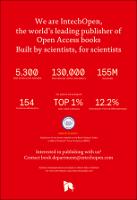Chapter Spatial Atomic Layer Deposition
Author(s)
Jiménez, Carmen
Bellet, Daniel
Masse de la Huerta, César
Muñoz-Rojas, David
Huong Nguyen, Viet
Language
EnglishAbstract
In conventional atomic layer deposition (ALD), precursors are exposed sequentially to a substrate through short pulses while kept physically separated by intermediate purge steps. Spatial ALD (SALD) is a variation of ALD in which precursors are continuously supplied in different locations and kept apart by an inert gas region or zone. Film growth is achieved by exposing the substrate to the locations containing the different precursors. Because the purge step is eliminated, the process becomes faster, being indeed compatible with fast-throughput techniques such as roll-to-roll (R2R), and much more versatile and easier and cheap to scale up. In addition, one of the main assets of SALD is that it can be performed at ambient pressure and even in the open air (i.e., without using any deposition chamber at all), while not compromising the deposition rate. In the present chapter, the fundamentals of SALD and its historical development are presented. Then, a succinct description of the different engineering approaches to SALD developed to date is provided. This is followed by the description of the particular fluid dynamics aspects and the engineering challenges associated with SALD. Finally, some of the applications in which the unique assets of SALD can be exploited are described.
Keywords
chemical vapor deposition, spatial atomic layer deposition (SALD), atmospheric pressure, in-line processing, thin films, transparent conductive materials, fluid dynamicsDOI
10.5772/intechopen.82439Publisher
InTechOpenPublisher website
https://www.intechopen.com/Publication date and place
2019Classification
Materials science


 Download
Download